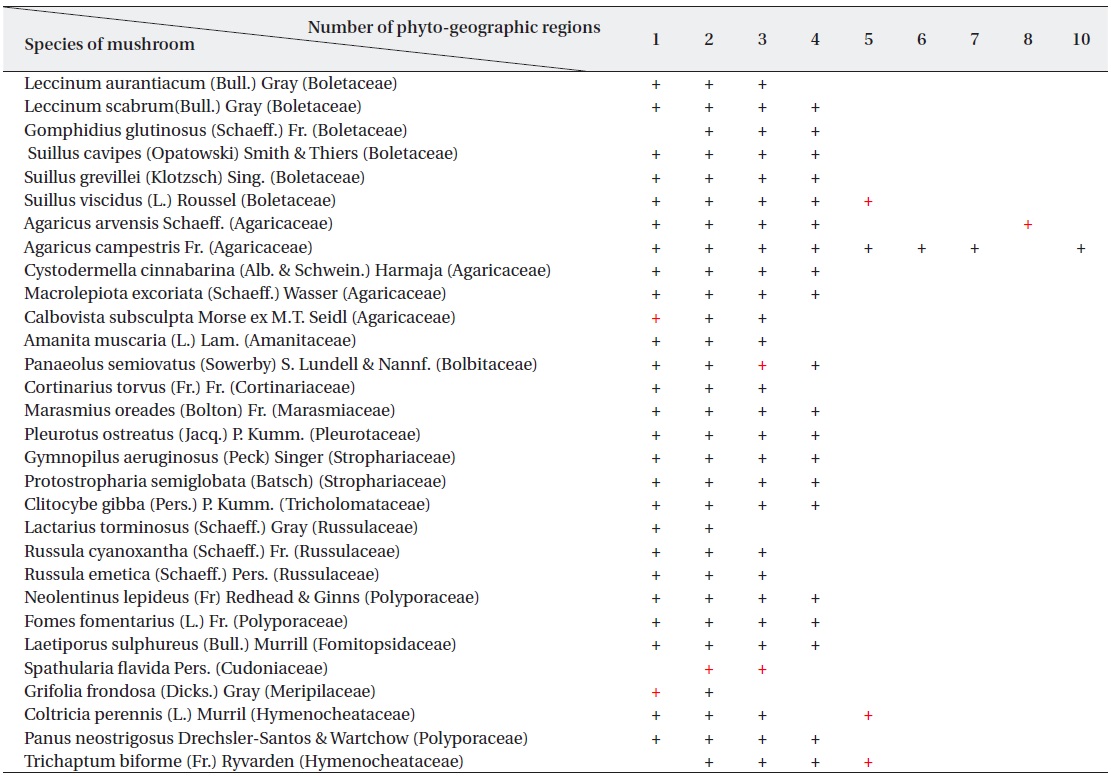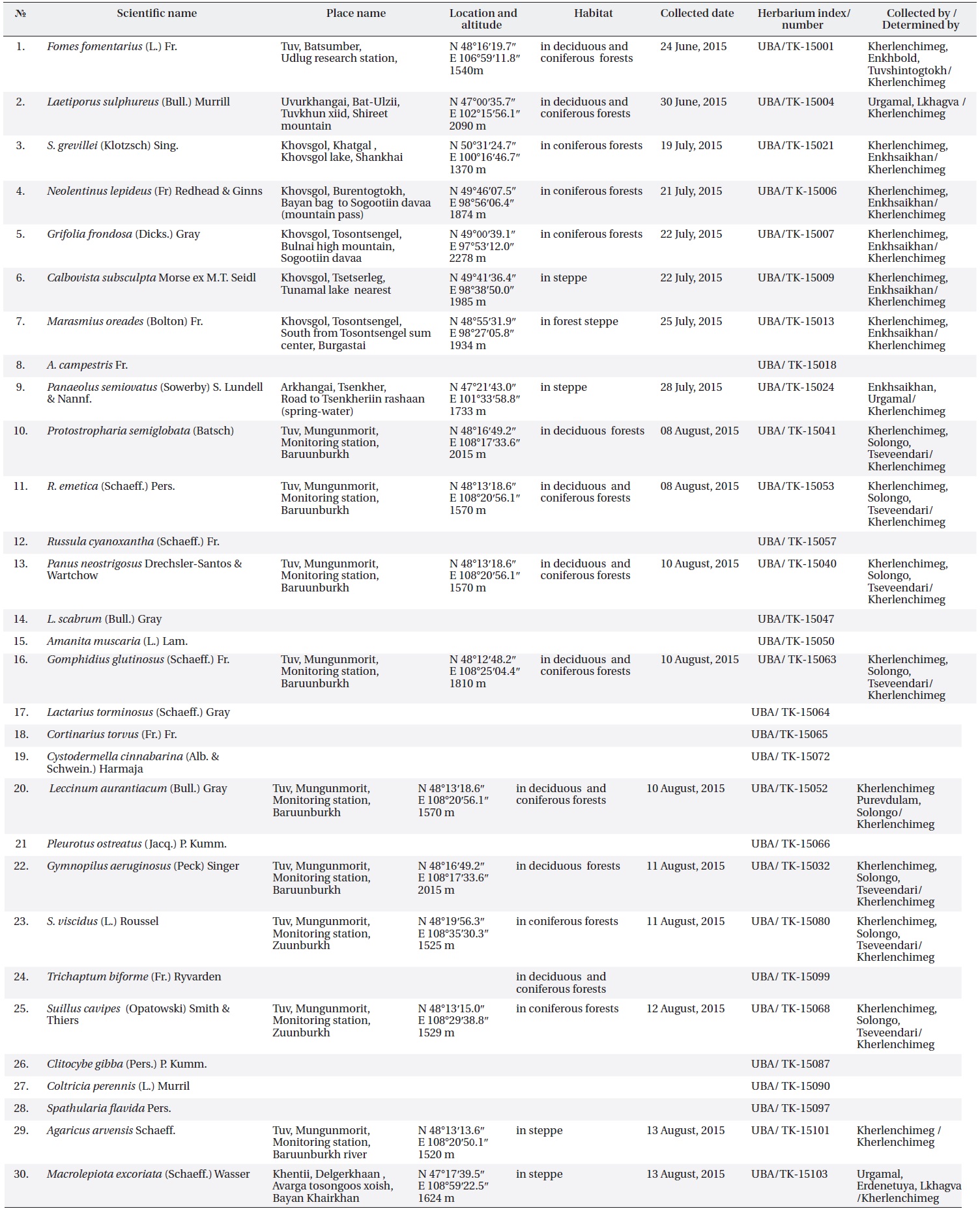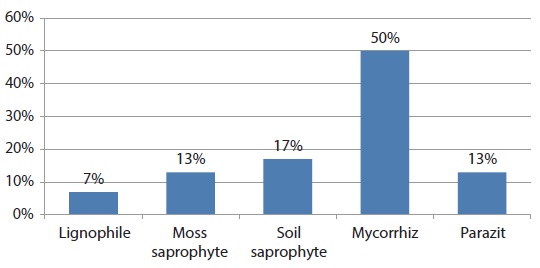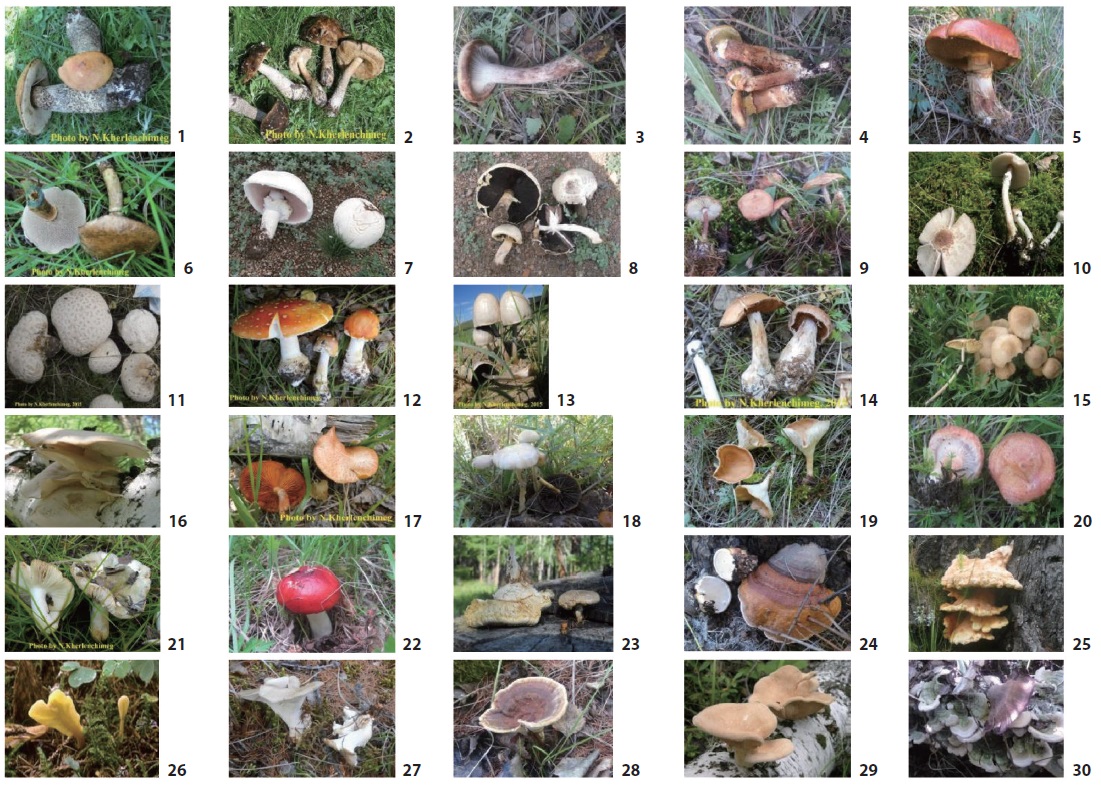



The study of classification, species and distributions of macrofungus has not being completed yet in Mongolia (Petrov 1999, Uranchimeg et al. 1984 Kherlenchimeg 2009, 2013).
First registration and data piling was done in Department of Botany, Institute of General and Experimental Biology, MAS.
Mongolian researchers have been studying taxonomy of largest family. For example, the taxonomies of families Hygrophoraceae (Uranchimeg and Kovalenko 1987), Agaricaceae (Kherlenchimeg 2014) have been reported.
The purpose of this study is to the flora macrofungi of Mongolia and as well as to determine species composition of the macromycetes registered and compare their flora analysis, traditional knowledge, ecological groups, growing environment and occurrence.
Twenty nine species and one form belong to the division Basidiomycota, one species to the division Ascomycota.
Specimens of the macromycetes taken from the Herbarium, Ulaanbaatar Academy (UBA)of the Department of Botany, Institute of General and Experimental Biology, Mongolian Academy of Sciences, and an additional data
were used in this study. Specimen enveloped 150 of samples macromycetes collected from June, 2015 to August, 2015 in Tuv, Arkhangai and Huvsgul. The nomenclature and taxonomy are based on following works of (Singer 1986), (Moncalvo et al. 2000) and following professional taxonomic databases and wesites: indexfungorumorg.name (2015).
The sampling and herbarization of materials were done according to the classical methodologies (Bondartsev 1950).
The identification of pileus, basida and ring МБС-10 binocular (14х), Basida, cystide, sporus and further internal morphology was done by JEOL JSM-61008 an electron microscope and МБУ-15 microscope (10х, 40х).
The geographical distribution data was carried in phyto-geographical regionalization (Grubov 1982) of the Mongolia (Fig. 1).
There have been registered that 30 species belonging to 25 genera, 17 families and occur in the flora fungus of Mongolia as present (Table 1).
[Table 1.] Distribution of macromycetes in Mongolia by order, family and genus

Distribution of macromycetes in Mongolia by order, family and genus
Mongolian macromycetes have been registered in 9 of 16 geographic regions as a marked by red plus in Table 2. According to our studies from June 2015 to August 2015,
[Table 2.] Distribution of mushrooms in phyto-geographical regions

Distribution of mushrooms in phyto-geographical regions
2 species in Khubsgul region, 2 species in Khangai region, 3 species in Khingan, 1 species in Khentei region and 1 species in Middle Khalkha dry steppe region newly registered respectively (Table 2).
There were growing 14 species (46%) in deciduous and coniferous forest, 8 species (27%) in coniferous forest, 2 species (7%) deciduous forest, 6 species (20%) steppe of macromycetes respectively (Fig. 2).
[Table 3.] Herbarium for “Traditional Knowledge” project of Mongolia (2015)

Herbarium for “Traditional Knowledge” project of Mongolia (2015)
As a result of this work, 7 species (23%) of macromycetes in forest steppe and steppe regions and 23 species (77%) of them in forest region have been determined. There were 2 species of lignophile (7%), 4 species of moss saprophyte (13%), 5 species of soil saprophyte (17%), 15 species of mycorrhiz (50%) among all species (Fig. 3).
According to our research work, there have been identified macromycetes of 30 species, 25 genus and 17 families belong to 6 orders. According to our studies from June to August, 2015, 2 species in Khubsgul region, 2 species in Khangai region, 3 species in Khingan region, and 1 species in Khentei region have been newly registered. As a result of this work, 7 species (23%) of macromycetes in forest steppe and steppe regions, and 23 species (77%) of them in forest region have been determined. 2 species of lignophile (7%), 4 species of moss saprophyte (13%), 5 species of soil saprophyte (17%), 15 species of mycorrhiz (50%) were occurred respectively.






